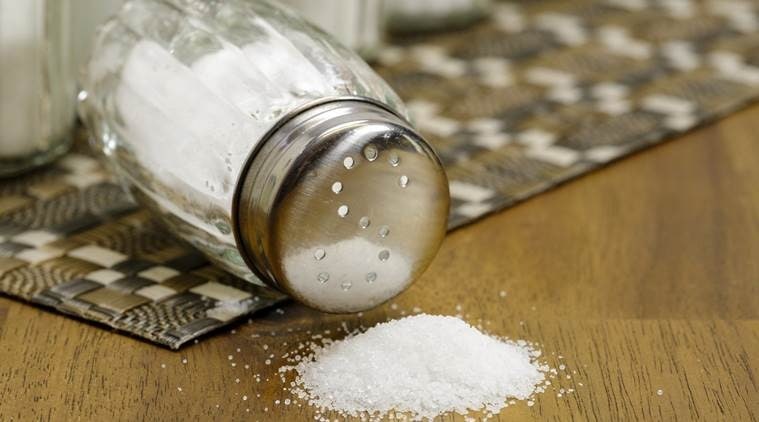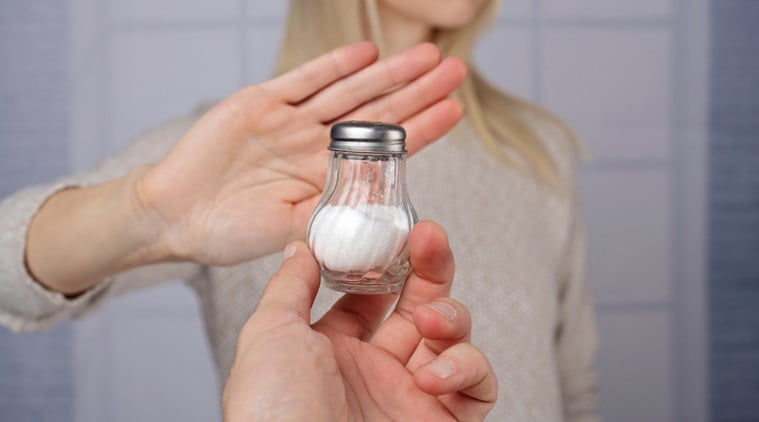Do you know about the different types of salts?

Iodized salt ranks marginally higher owing to its defensive effect on the thyroid gland. However, in order to control blood pressure, and for cardiac safety, it is necessary to reduce the amount of salt you eat

Salt is one of the most important kitchen ingredients. It can make or break your cook. It helps minimise bitterness and enhance the flavour by giving a two-dimensional taste to sweet and sour dishes. It also unlocks and emphasises the flavour of dishes, which adds to the entire eating experience. This is why it is important to distinguish between dishes with different salts.
Here’s all you need to know about salts and their properties, mentions dietitian Garima Goyal.
Table salt
This is the most common form of salt used, which is also readily available. In addition to being finely grounded with no sign of impurities, it also undergoes extreme polishing. The salt is processed with an anti-caking agent that helps it from falling apart. Moreover, table salts that are available today come with iodine fortification, which safeguards against thyroid problems which are commonly caused due to iodine deficiency. It has also been proven important for adequate growth of a child’s brain.

However, excessive intake of this salt can be harmful and induce variations in the body tissues which can lead to added health problems.
ALSO READ | Is salt making you sick? Here are the facts
Black salt (kala namak)
Himalayan salt in layman language is known as the Indian black salt. Assorted spices, charcoal, seeds and tree bark are used in the preservation of this salt. Further, it is kept in the hot oven for a full day until it is cooled off, processed and aged properly. This process induces that reddish black colour of kala namak. It is also said to treat issues like bloating, constipation, heartburn and relieving stomach cramps and spasms.
Himalayan pink salt (sendha namak)
A post shared by CoastalBeautyCo (@coastalbeautyco_) on Jul 26, 2020 at 2:03pm PDT
Sendha namak, Himalayan rose, or pink salt is one of the purest forms of salts that is mined in Pakistan’s side of Himalayas. It consists of 84 natural minerals and nutrients that are essential for the human body. Its colour ranges from white to deep pink. Pink salt is known for assisting in many body functions, such as maintaining blood sugar, improving the pH of blood cells and decreasing muscle cramps, thus making it the healthiest form of salt for consumption. The 84 dominant minerals enhance the bolder quality of the salt allowing it to be used as cooking as well as a finishing salt.
Smoked salt
Smoked salt undergoes a slow smoking process over a wood fire, which typically includes wood from pine, hickory, apple or alder. As the name suggests, this salt brings out that extreme smoky flavours of foods. The texture and taste of the salt differ from one brand to another as it is based on the length of the smoking process and the quality of the wood used. This salt is quite suitable for flavouring of meats and tubers like potatoes.
Kosher salt
Kosher salt has a rough, flaky and grainy texture and can easily be substituted for table salt. The variations between the two salts, apart from their thickness and wider sized grains, is that kosher salts don’t undergo iodine fortification and no anti-caking agents are used. Being coarser, it serves the purpose of a brush – meats can be topped with it. Kosher salt is favoured by many chefs due to its production of mild flavours.
Alaea salt
Hawaiian red salt, also known as Alaea salt, is a form of sea salt mixed with a rich volcanic clay iron oxide known as alaea. It has historically been used by Hawaiians to clean and purify houses and temples. True Hawaiian red salt can be expensive and difficult to obtain and is known to contain at least 80 trace minerals, including iron oxide.
Sea salt (samundari namak)
Sea salt is formed by the evaporation of seawater. It’s a sort of salt that’s minimally refined. In fact, it is reported to have a higher iodine content and also has a special non-melting property when steamed. This preserves its granular form which does not make the dish watery. The low sodium content is attracting many eyes today.

Celery salt (ajmod ka namak)
Compared to other forms, this salt has a low sodium content and is formed by combining celery seeds and salt derived from seawater.
So, which salt is the best?
Essentially, every form of salt contains certain nutritional advantages and should be used interchangeably depending on the cooking method. Iodized salt ranks marginally higher owing to its defensive effect on the thyroid gland. However, in order to control blood pressure, and for cardiac safety, it is necessary to reduce the amount of salt you eat. It is advised that one teaspoon (2300 mg sodium) a day be taken by a regular individual, and someone with elevated blood pressure should only consume ¾ tsp (1500 mg sodium).
While you may be blaming the salt entirely for ill-effects, it depends on the volume and the consistency of water used in a dish. Use various salts in specific dishes to reach an optimal degree of safety and taste, shares Goyal.
For more lifestyle news, follow us: Twitter: lifestyle_ie | Facebook: IE Lifestyle | Instagram: ie_lifestyle
? The Indian Express is now on Telegram. Click here to join our channel (@indianexpress) and stay updated with the latest headlines
For all the latest Lifestyle News, download Indian Express App.
Source: Read Full Article


